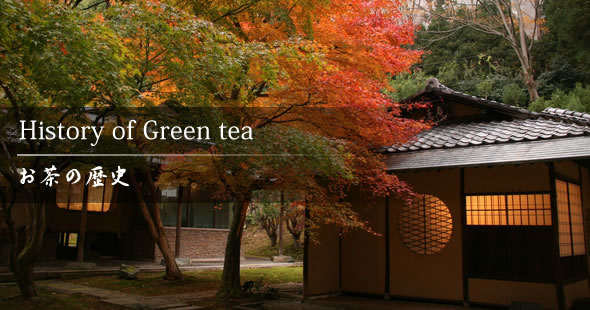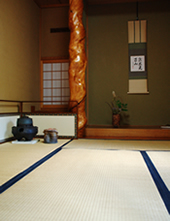History of Green tea
History of Green tea
 Green tea was brought from China and has been extensively cultivated in Japan. Although it is now one of the most popular beverages in Japan, it was once so precious that only a select few, such as monks and nobility could afford its pleasures.
Thanks to the efforts of Eisai, a twelfth century Zen monk, green tea was introduced to the public, and samurai warriors and common people began to enjoy the new drink. Chinese people have long known of the health benefits of green tea and used it medicinally. When Eisai was introducing the effect of drinking green tea, he professed, "A medicine is for one disease only, but green tea is a kind of panacea that can prevent and treat all sorts of ailments."
Green tea was brought from China and has been extensively cultivated in Japan. Although it is now one of the most popular beverages in Japan, it was once so precious that only a select few, such as monks and nobility could afford its pleasures.
Thanks to the efforts of Eisai, a twelfth century Zen monk, green tea was introduced to the public, and samurai warriors and common people began to enjoy the new drink. Chinese people have long known of the health benefits of green tea and used it medicinally. When Eisai was introducing the effect of drinking green tea, he professed, "A medicine is for one disease only, but green tea is a kind of panacea that can prevent and treat all sorts of ailments."
The custom of drinking tea, first for medicinal and then largely also for pleasurable reasons, was already widespread throughout China. In the early 9th century, Chinese author Lu Yu wrote the Cha jing (茶經) a treatise on tea focusing on its cultivation and preparation. Lu Yu's life had been heavily influenced by Buddhism, particularly the Zen-Cha school. His ideas would have a strong influence in the development of the Japanese tea ceremony.
Around the end of the 12th century, the style of tea preparation called "tencha" (点茶), in which powdered tea was placed in a bowl, hot water poured into the bowl, and the tea and hot water whipped together, was introduced by Eisai, another Japanese monk returning from China. He also brought tea seeds back with him, which eventually produced tea that was of the most superb quality in all of Japan.
This powdered green tea was first used in religious rituals in Buddhist monasteries. By the 13th century, Samurai warriors had begun preparing and drinking matcha as they adopted Zen Buddhism, and the foundations of the tea ceremony were laid.
Tea ceremony developed as a "transformative practice," and began to evolve its own aesthetic, in particular that of Wabi, meaning quiet or sober refinement, or subdued taste, "is characterized by humility, restraint, simplicity, naturalism, profundity, imperfection, and asymmetry [emphasizing] simple, unadorned objects and architectural space, and [celebrating] the mellow beauty that time and care impart to materials."Ikkyu, who revitalized Zen in the 15th century, had a profound influence on the tea ceremony.
By the 16th century, tea drinking had spread to all levels of society in Japan. Sen no Rikyu, perhaps the most well-known-and still revered-historical figure in tea ceremony, followed his master, Takeno Joo's, concept of Ichi-go Ichi-e, a philosophy that each meeting should be treasured, for it can never be reproduced. His teachings perfected many newly developed forms in Japanese architecture and gardens, fine and applied arts, and the full development of chad?, "the "way of tea". The principles he set forward - harmony (和 Wa), respect (敬 Kei), purity (清 Sei), and tranquility (寂 Jaku) - are still central to tea ceremony.
Subsequently, green tea has taken root in Japanese society as a specialty item. Recently, it has once again attracted a lot of attention as a health-promoting beverage, with many benefits. We hope you enjoy drinking green tea to your heart's content.














